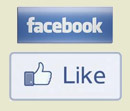Reflexes
There are 70 known primary reflexes – We concentrate on the primary reflexes that are known to affect educational progress. It is due to the retention of these reflexes that a person’s automatic natural skills and control are prevented from developing properly.
The following section explains briefly what these reflexes do and how they cause interference when they are retained beyond their normal time span :
Asymmetrical Tonic Neck Reflex (ATNR)
We can see the ATNR reflex at work when when a baby turns its head to one side and the limbs on that side straighten. The limbs on the other side bend or flex.
ATNR should be switched off at six months of age
The retention of this reflex causes the most interference with a child’s learning process. It is responsible for problems with:
- Handwriting -problems with handwriting is the most obvious casualty of the retained ATNR – each time a child turns his head to look at the page, his arm will want to extend and the fingers will want to open. Holding and working a pen or pencil for any length of time will require enormous effort. This leads to very heavy pencil grip and tension in the body. All the energy is now going into the writing and distracts attention from the writing content. Some children learn to compensate with an immature pencil grip. Writing may slope in different directions from one side of the page to the other so the child may rotate the page as much as 90 degrees when writing in an attempt to “accommodate” the effect of ATNR. Fluent expression of ideas in written form may show a marked discrepancy from the child’s ability to express themselves orally
- Reading – Eye tracking difficulties – when reading the eyes do not move smoothly from one side of the page to the other, they frequently jump. This can result in loosing your place, loss of accuracy and loss of comprehension.
- Mixed Laterality – Child may use left foot, right hand, left ear or child may use left and right hands interchangeably for the same task. The effect of mixed laterality can be failure to send information to the most efficient centre of the brain for that skill. Competition between 2 centres may occur, which is very like two people trying to drive the same car.
Other symptoms of retained STNR include:
- poor posture
- tendency to slump when sitting, particularly at a desk
- poor hand-eye coordination
- messy eating
- clumsy
- problem catching balls
- slow at copying from blackboard
Moro Reflex:
The Moro Reflex should disappear at 2-4 months and should be replaced by the adult “Startle” reflex. The Moro reflex is a response to unexpected changes within the infant’s environment and acts as the infants’ “fight of flight” response. The prolonged retention of this reflex can be highly disruptive to a child’s development.
Symptoms of a retained Moro Reflex include:
- Poor coordination (particularly during ball games) – which leads to poor sequencing and memory skills
- Balance problems
- Motion sickness
- Sensitivity to bright lights
- Difficulty reading black print on white paper
- Tires easily under fluorescent lights
- Dislike of loud noises
- Easily distracted
- Allergies and lower immunity
- Dislike of change- child may be clingy or shy
Tonic Labyrinthine Reflex (TLR)
The TLR is the opposite of STNR; when a baby looks up TLR causes the baby to straighten it’s legs and arms, likewise when the head goes down the limbs fold in. This reflex should be fully present from the time of birth to 4 months old. It is active during the birthing process. It is linked to balance and muscle tone. If this reflex persists it will disrupt balance and gross motor skills.
Symptoms of this retained reflex can include:
- Poor posture
- Tendency to walk forward on toes
- Weak at ball skills
- Poor articulation – due to an extension of the tongue in the mouth pronunciation is distorted.
Spinal Galant Reflex:
This reflex is present at birth, and should disappear by the time the baby is 9 months old.
If it persists, the child experiences :
- Restlessness
- Fidgeting
- Inability to sit still.
- Bedwetting is sometimes associated with this reflex
- A tendency to dislike tight clothing around the waist.
- Poor concentration and short term memory, making it difficult to take in and process information.
